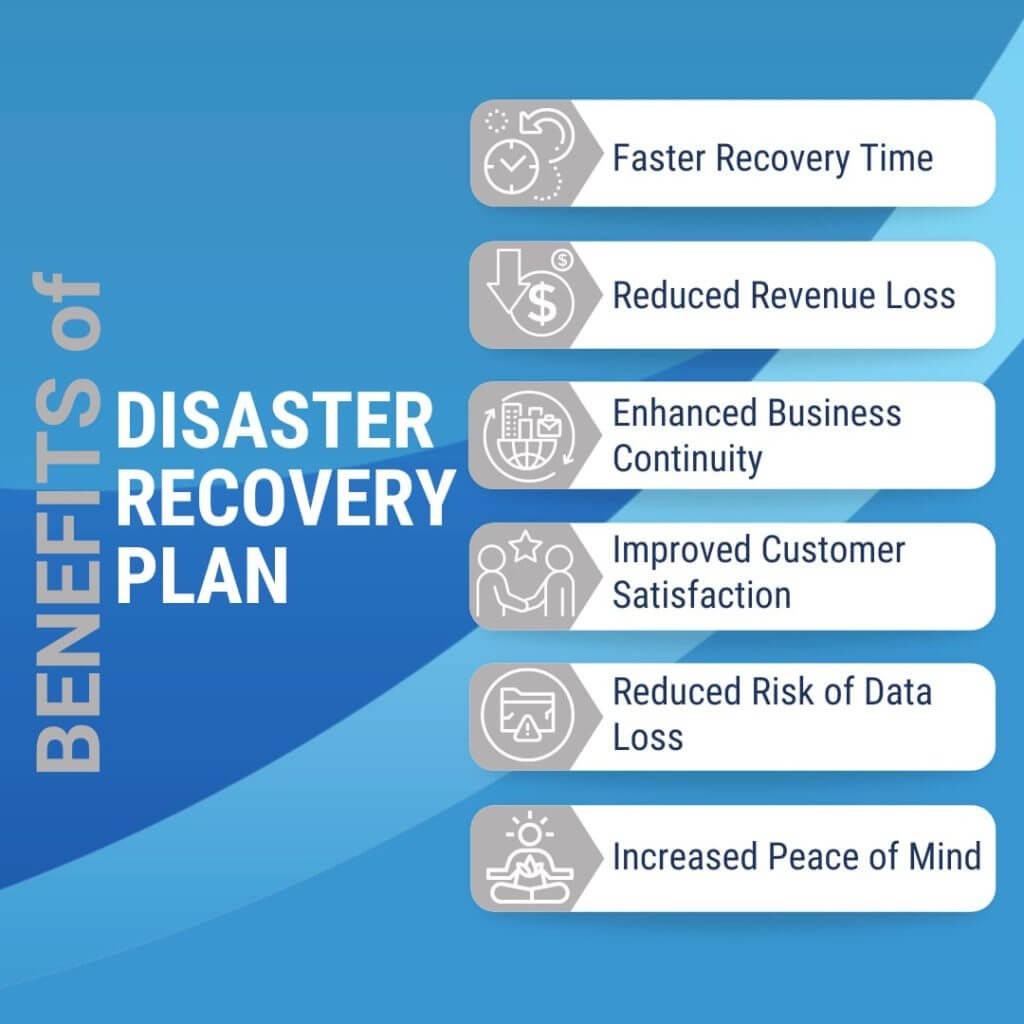Secure your future with our IT Disaster Recovery plan, providing tailored solutions for business stability, rapid recovery, and mitigation.


Imagine this: you walk into your office one morning to find a complete shutdown.
A cyberattack, power outage, or even a natural disaster has crippled your IT systems. Without a plan, critical operations grind to a halt, potentially costing your business thousands in lost revenue and productivity.
This is where a disaster recovery plan (DRP) comes in. It’s essentially a roadmap that outlines exactly how your business will bounce back from any unexpected IT disruption.
Nowadays, a single day of downtime in business can be catastrophic.
A DRP minimises this risk by ensuring a swift and efficient recovery, safeguarding your reputation and keeping your business running smoothly.
Disaster Recovery Plan details steps to recover data, restore functionality, and get your team back up and running as quickly as possible.



Here’s what makes a disaster recovery plan so essential:
An IT disaster recovery plan (DRP) is a roadmap that outlines how your business will respond and recover from an unexpected disruption to your IT systems. This disruption could be caused by anything from a cyberattack or power outage to a natural disaster or hardware failure.
A good DRP will identify your critical data and systems, establish clear recovery procedures, and assign roles and responsibilities to your team. It should also consider factors like acceptable downtime (RTO) and data loss (RPO) to ensure a swift and efficient recovery.
Imagine a fire breaks out in your office building, damaging your servers. Your DRP would kick in, outlining steps to recover your critical data from backups stored securely off-site. This could involve accessing cloud backups or utilising a disaster recovery service provider’s infrastructure. By following the plan, your team can restore essential systems quickly, minimising downtime and ensuring business continuity.
The primary purpose of a DRP is to minimise downtime and data loss in the event of a disaster. It helps businesses get back up and running as quickly as possible, reducing financial losses and reputational damage.
A well-defined DRP also provides peace of mind for business owners and employees by ensuring everyone knows their roles and responsibilities during a crisis. This reduces confusion and allows for a coordinated response, leading to a faster and more efficient recovery.
There are three main types of disaster recovery plans:
While both BCP and DRP are crucial for business preparedness, they address different aspects. A BCP focuses on maintaining critical business functions during and after an interruption. This might involve implementing temporary workarounds or utilising alternative resources to keep the business running.
On the other hand, a DRP specifically focuses on recovering your IT systems and data after a disaster. It outlines the steps to restore critical systems and applications to ensure a swift return to normal operations.
Think of it this way: a Business Continuity Plan is your overall strategy for staying afloat during a disruption, while a Disaster Recovery Plan is a specific action plan for getting your IT systems back online.
There’s no one-size-fits-all format for a disaster recovery plan. However, a well-structured DRP typically includes these key elements:
The main steps in IT disaster recovery can be summarised in four phases:
While there’s no single mandated standard, Australia leverages several prominent frameworks for disaster recovery. Here are the key ones:
Disaster recovery for IT systems focuses on protecting your critical data and applications from unexpected disruptions. It ensures you can restore these systems quickly and minimise downtime in the event of a disaster. This involves procedures for:
By implementing a robust disaster recovery plan for your IT systems, you can ensure your business remains resilient in the face of unforeseen events.